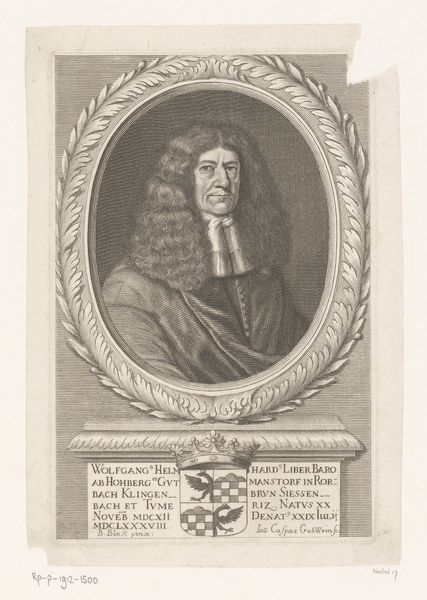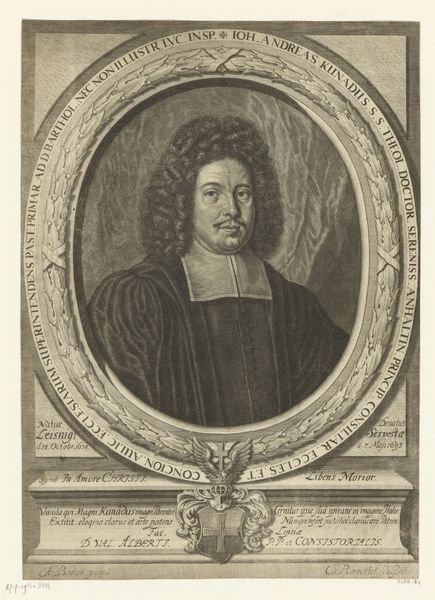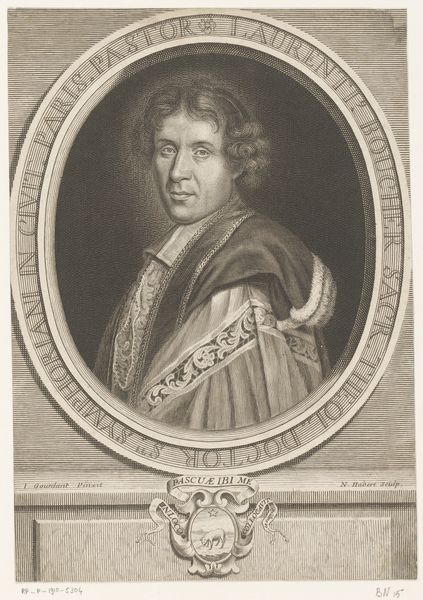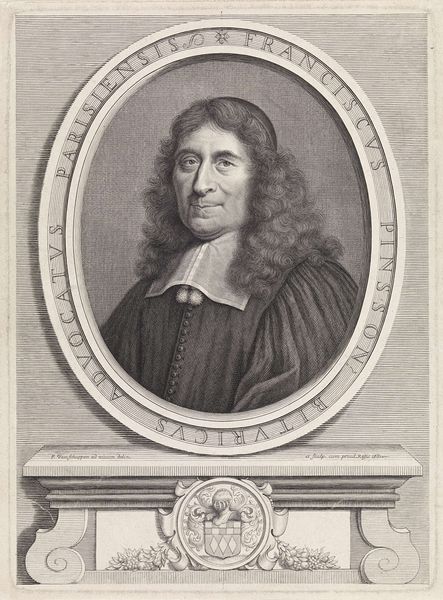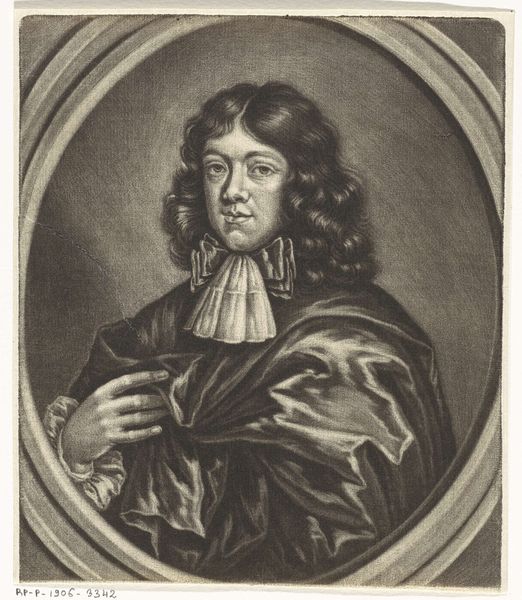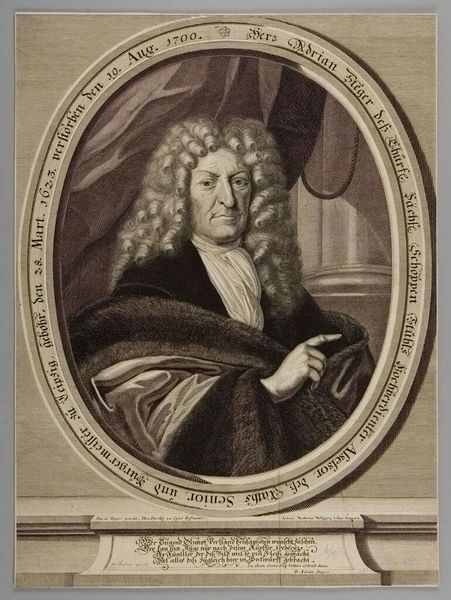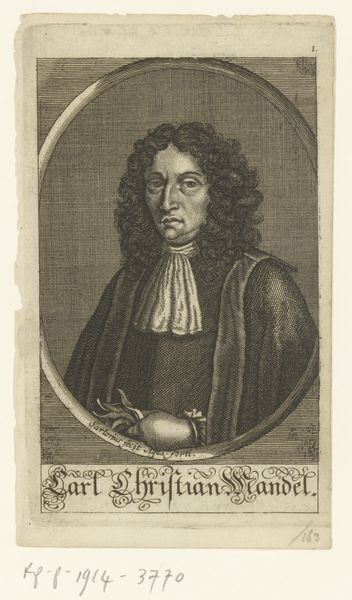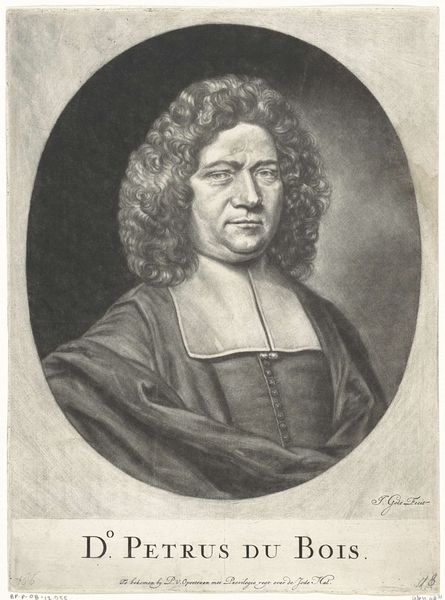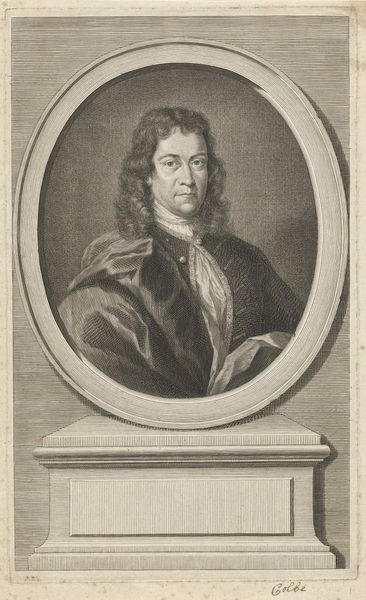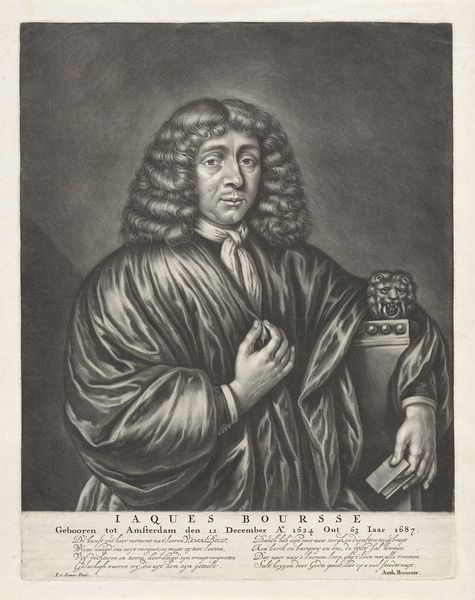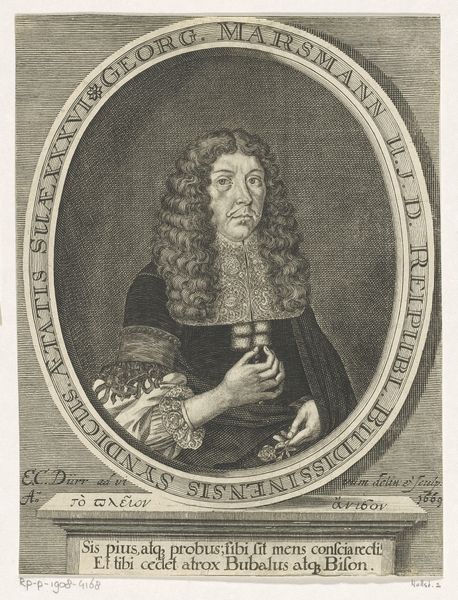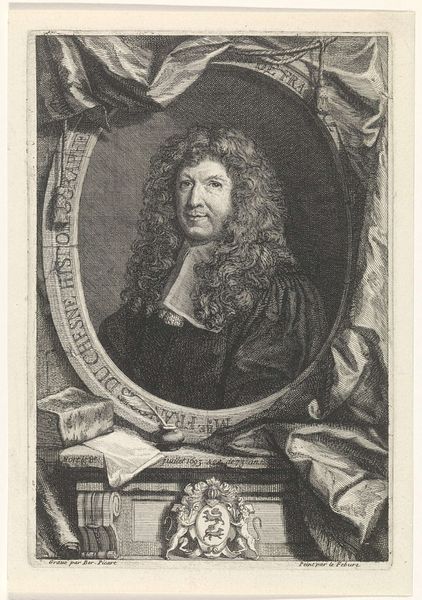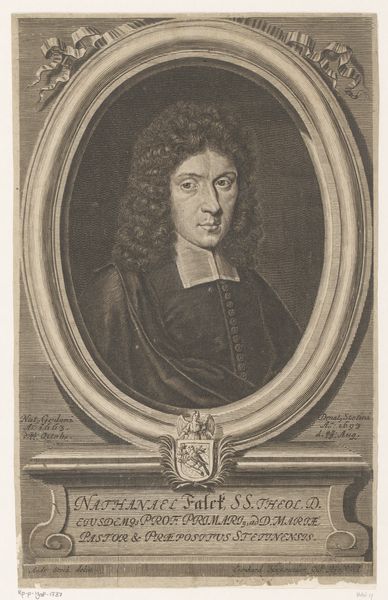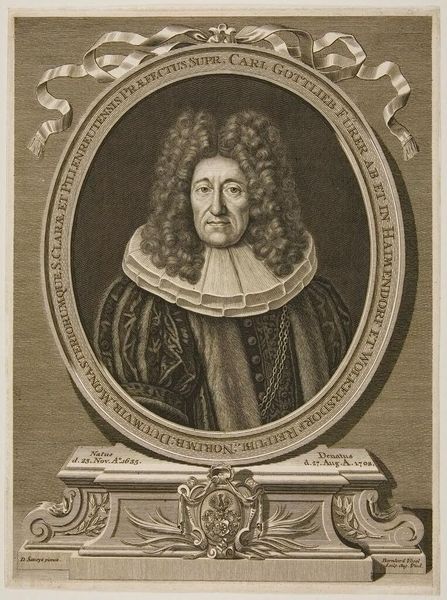
print, metal, engraving
portrait
baroque
metal
genre-painting
engraving
Dimensions: height 238 mm, width 173 mm
Copyright: Rijks Museum: Open Domain
Curator: This is "Portret van Dirk Scholl," a print made in 1699 by Thomas van der Wilt. The artwork depicts a distinguished gentleman, identified as Dirk Scholl. It’s a baroque-style portrait, created using metal engraving techniques. Editor: My immediate reaction is the image is somewhat melancholic, perhaps due to the monochromatic palette and the subject's intense gaze. The details are impressive for an engraving; look at the texture of his hair and the fabrics. Curator: Let’s consider Dirk Scholl’s role as an organist and bell ringer. Those roles weren't simply about musical talent; they reflected significant cultural power and religious identity. Editor: Absolutely, bells have been crucial to cultural memory. Throughout time, and still to this day, they signal key events and the sacred in society. I would wager the tower visible behind Scholl likely resonates deeply as an identity symbol. Curator: Yes, and the text beneath the image is quite revealing, noting Scholl's position in Delft and Arnhem, tying him to those localities through his occupations. His presence within the oval suggests importance but perhaps also constraint by social expectations. Editor: Considering his gesture toward what appears to be a written score or musical manuscript, Scholl may be declaring authority over his work as both craftsman and interpreter of faith. Do you see an expression of both creative agency and acceptance of social duty? Curator: Definitely. Van der Wilt positions Scholl both within and slightly outside traditional societal roles. Editor: It is truly intriguing how the symbolic language embedded in this image conveys continuity over generations through something as fundamental as musical expression. Curator: Indeed, analyzing this image offers unique perspectives on power, religious affiliation, and artistic agency during the baroque period. It offers so much through these detailed layers of symbolism and contextual elements.
Comments
No comments
Be the first to comment and join the conversation on the ultimate creative platform.
